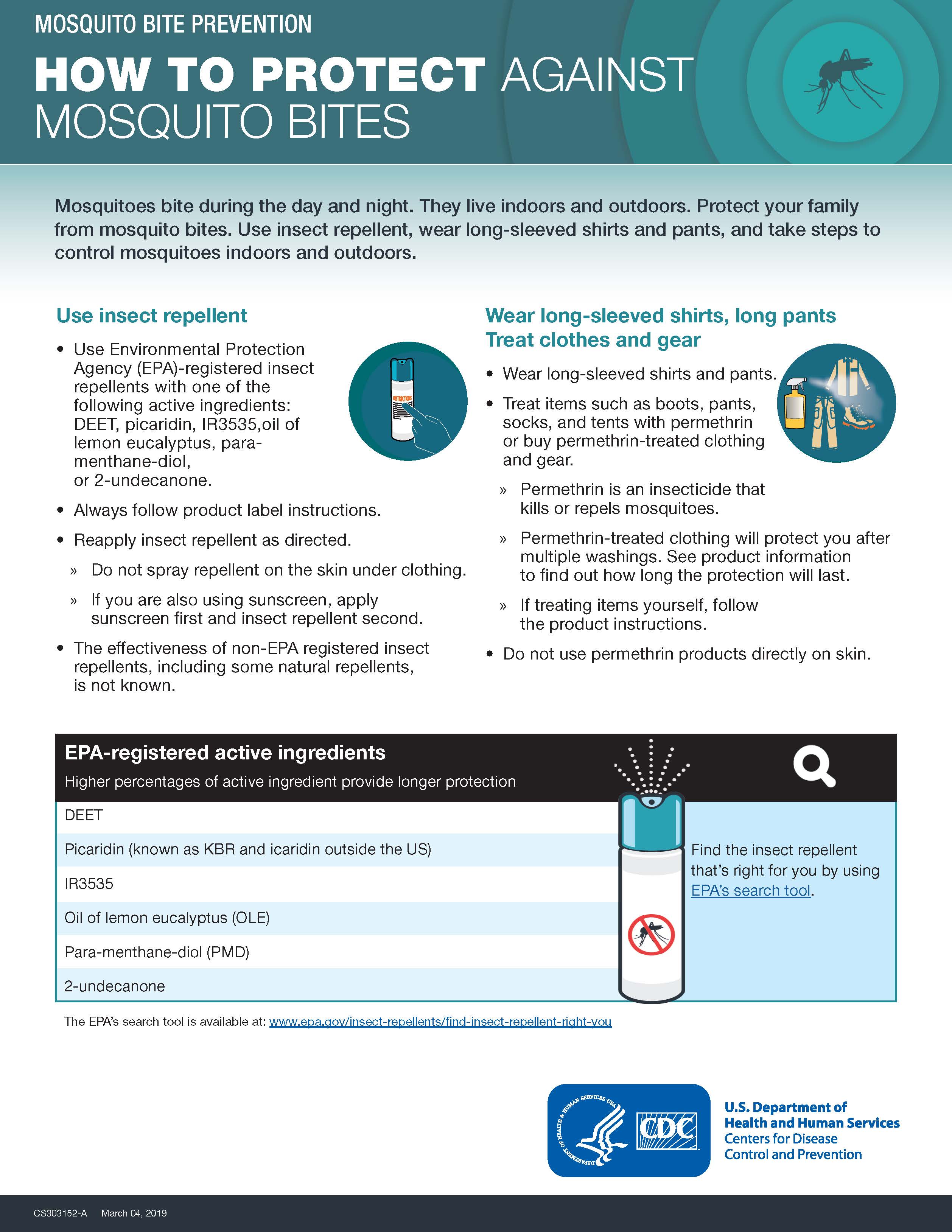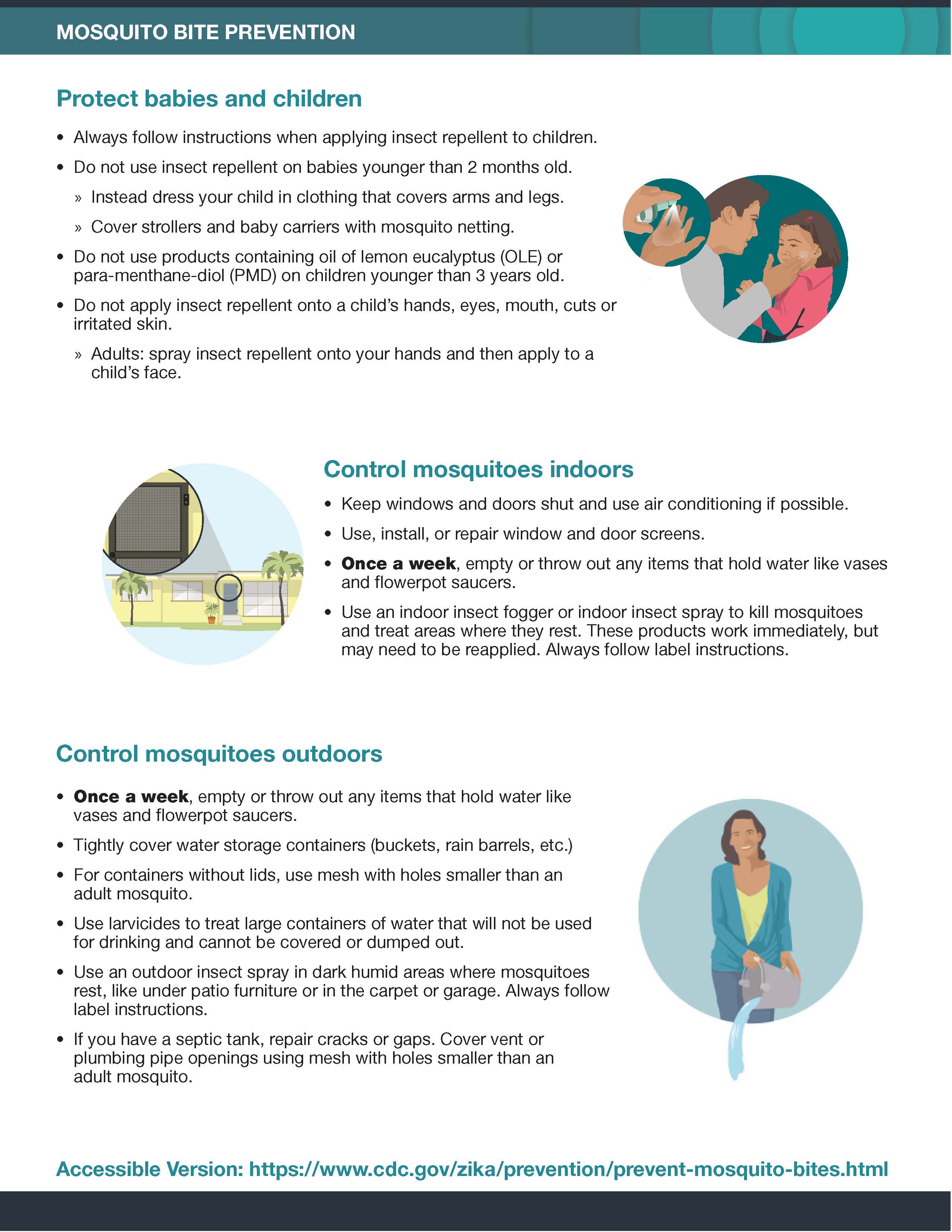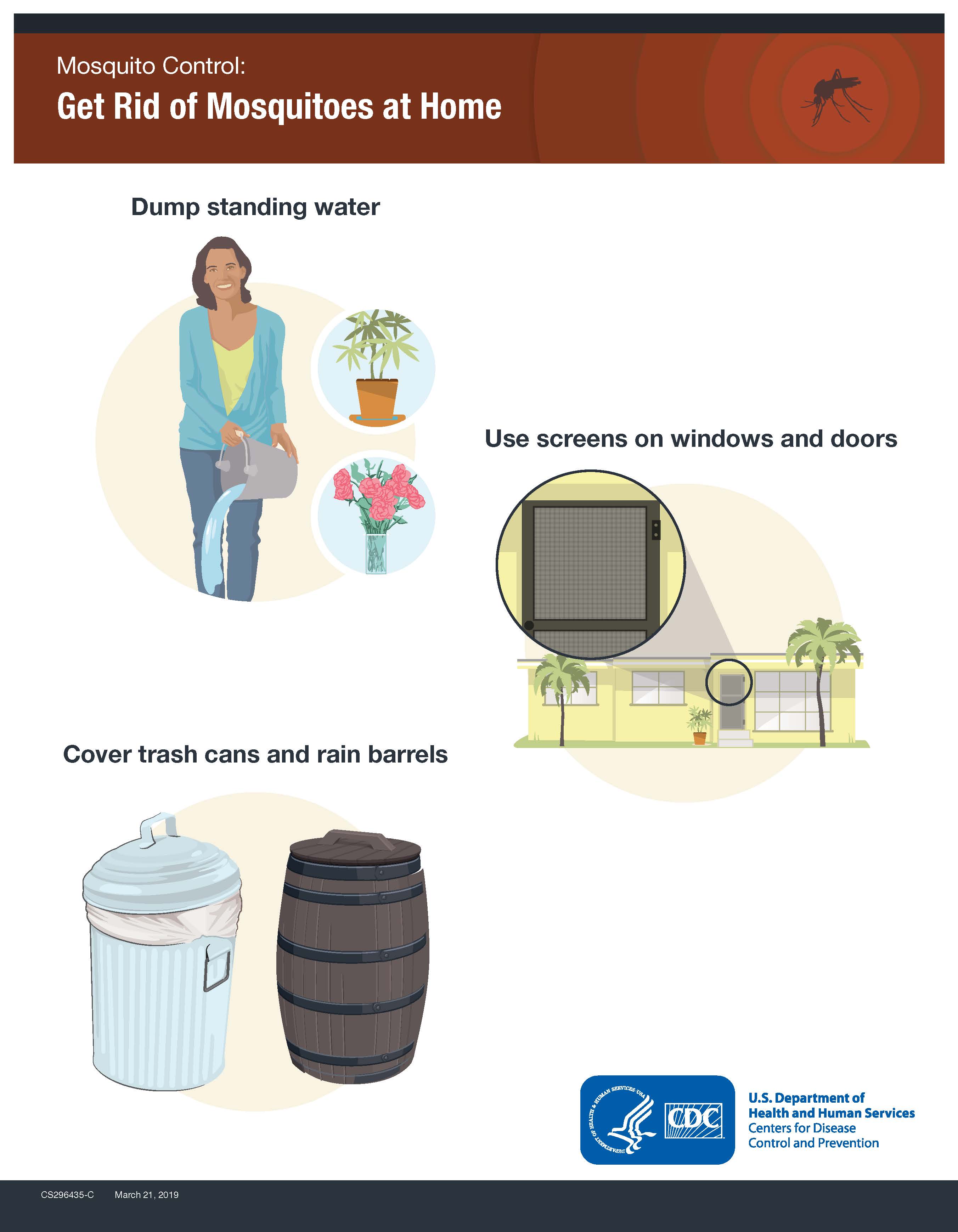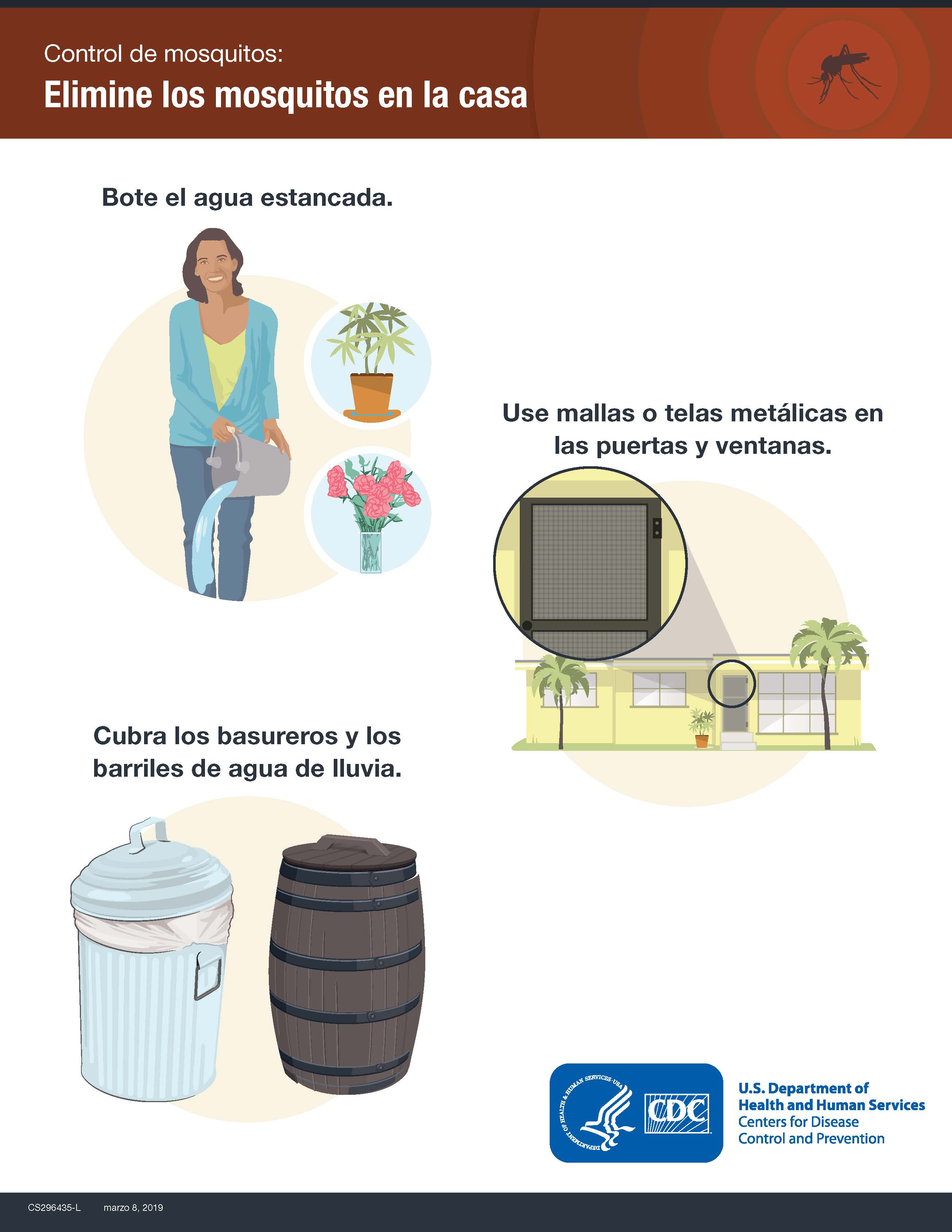Information on Mosquitoes and EEE Virus
EEE Update 10/7/19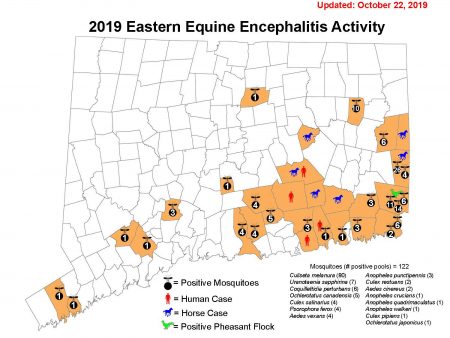
NVHD will update this page as information becomes available or updated regarding Eastern Equine Encephalitis in CT and the Valley region.
For residents of towns that make up the Naugatuck Valley Health District — Ansonia, Beacon Falls, Derby, Naugatuck, Seymour and Shelton, the risk of acquiring any mosquito-borne disease, whether it be Eastern Equine Encephalitis (EEE) or West Nile Virus, is close to zero at this time of year.
On August 26, 2019, the Connecticut Agricultural Experiment Station (CAES) found EEE virus in mosquitoes that bite only birds at their trap site in Shelton, which is near a swamp. Mosquitoes trapped at this CAES site since then have tested negative for EEE virus.
On September 23, 2019, CAES found EEE virus in mosquitoes that bite only birds in our neighboring community Bethany, at their trap site which is near a bog. This is the first time that EEE virus has been found at this trap site this year, which is evidence that very few mosquitoes are infected with EEE virus at this trap site.
The NVHD Director of Health remains in close contact and consultation with the State of Connecticut Mosquito Management Program, which is a collaborative effort involving the CAES, the Department of Public Health, the Department of Energy & Environmental Protection, the Department of Agriculture, and the UCONN Department of Pathobiology and Veterinary Science. These are the agencies responsible for monitoring the potential public health threat of mosquito-borne diseases in our state.
From a public health standpoint, NVHD and the Connecticut Mosquito Management Program are recommending that Valley residents take personal protective measures to prevent mosquito bites until the first hard frost of the fall. It is not necessary for residents in our District to cancel or limit activity around dusk or dawn. Spraying pesticides to reduce mosquito populations is not likely to be effective at this time of year.
NVHD Director of Health Jessica Stelmaszek said, “Connecticut, particularly the southeastern part of the state, and our neighboring states in New England, are seeing an unusually high presence of EEE detected this year however I want to remind Valley residents that the risk of transmission in the western part of the state remains very low. Even though the risk is low, residents should still practice precautions to avoid being bit.”
NVHD is asking Valley residents not to take unnecessary trips into marshes and freshwater swamps as these are typically breeding grounds for mosquitoes that transmit the EEE virus, with such mosquitoes being most active at dusk and dawn. Overnight camping or other substantial outdoor exposure in freshwater swamps should be avoided. Even though the temperatures are getting cooler, mosquitoes continue to be active until the first heavy frost and residents should continue to take measures to prevent mosquito bites.
NVHD is recommending that residents continue to take general precautions that include the following:
- Use insect repellent, according to directions, when outdoors
- Cover up: wear long-sleeved shirts, long pants, socks and shoes when outdoors
- Keep mosquitoes outside by using window and door screens that are tight-fitting and in good repair
- Remove items that may lead to standing/stagnant water around your home. Mosquitoes can breed in water that collects in ditches, clogged gutters, old tires, wheelbarrows, wading pools, etc.
- Do not camp overnight near freshwater swamps and use mosquito netting on tents
NVHD maintains a webpage dedicated to updates regarding EEE and mosquito prevention at http://www.nvhd.org/eee-2019 and will continue to post message on its social media pages (Facebook, Twitter and Instagram).
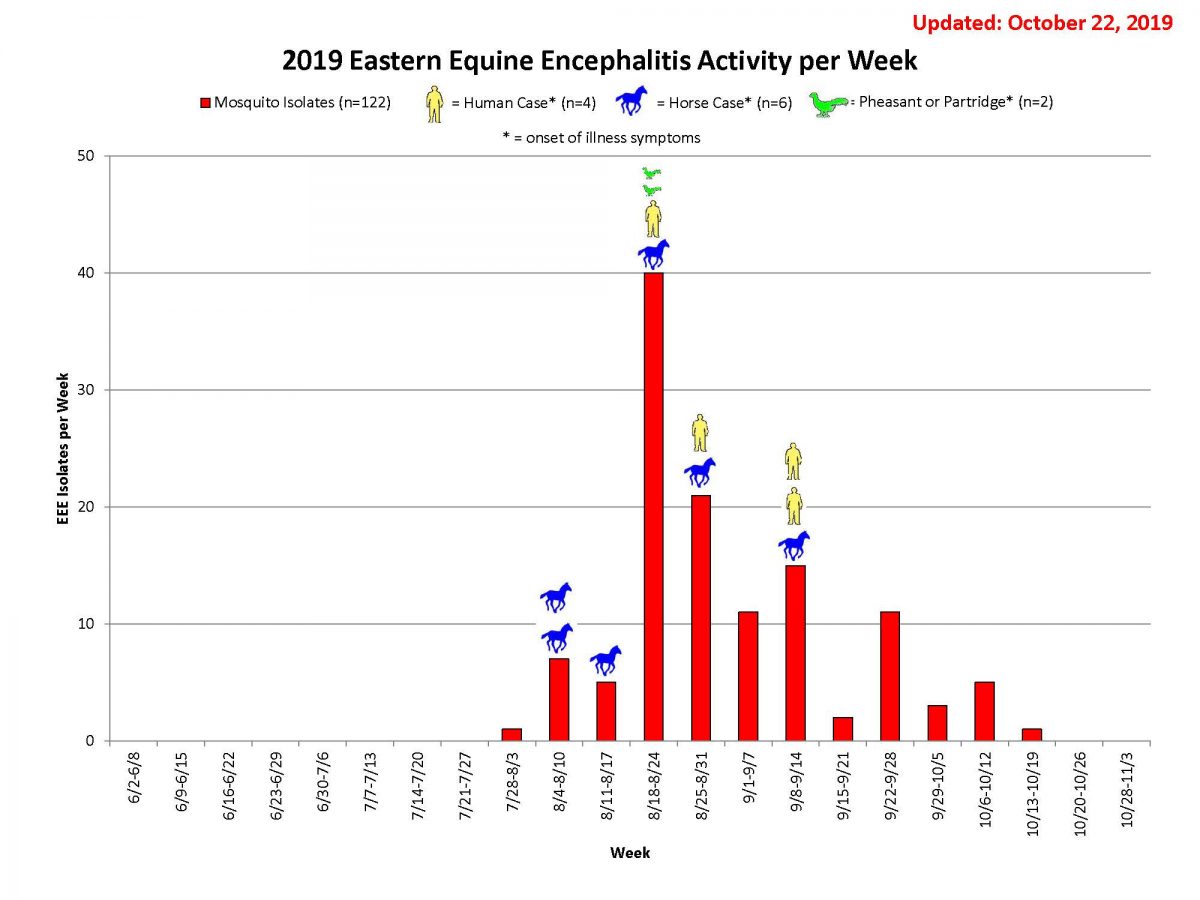
The Connecticut Agricultural Experiment Station is a separate state agency responsible for trapping, identifying, and testing mosquitoes for encephalitis viruses.
Mosquito Prevention
EEE FAQs
What is Eastern Equine Encephalitis?
Eastern equine encephalitis (EEV) is a rare but serious disease caused by a virus.
How is the EEE virus spread?
The EEE virus is spread through the bite of an infected mosquito. Transmission to humans requires mosquito species capable of creating a “bridge” between infected birds and uninfected mammals such as some Aedes, Coquillettidia, and Culex species. **The mosquito that tested positive in Shelton was a Cs. melanura mosquito which feeds almost exclusively on birds so it is not considered an important vector for human transmission. The mosquitoes are found in freshwater swamps and hardwood swamps.
The virus is not spread directly from person-to-person.
Who is at risk for EEE?
In CT, the greatest risk for being bitten by an infected mosquito is from late July to mid October during activities near fresh water swamps although most mosquitoes in CT do not carry EEE. Anyone can get EEE if bitten by an infected mosquito however persons over age 50 and younger than age 15 are at greatest risk of severe disease (encephalitis) following infection. According to the CDC, EEEV infection is thought to confer life-long immunity against re-infection.
What are the symptoms of EEE?
EEEV infection can result in one of two types of illness, systemic or encephalitic (EEE).
Systemic Infection
- Has an abrupt onset
- Characterized by chills, fever, malaise, arthralgia, and myalgia
- Illness lasts 1 to 2 weeks
- Recovery is complete when there is no central nervous system involvement
Encephalitis
- In infants, the encephalitic form is characterized by abrupt onset
- In older children and adults, encephalitis is manifested after a few days of systemic illness
- Signs and symptoms in encephalitic patients are fever, headache, irritability, restlessness, drowsiness, anorexia, vomiting, diarrhea, cyanosis, convulsions, and coma
- Early symptoms include high fever (103° – 106°F), stiff neck, severe headache, and lack of energy
- The disease worsens quickly and some patients go into a coma within a week
- *Encephalitis (swelling of the brain) is the most dangerous symptom
How soon do symptoms appear?
Symptoms can appear anywhere from 3 to 10 days after being bitten by an infected mosquito.
What is the treatment for EEE?
No specific antiviral treatment for EEEV infections is available. Patients with suspected EEE should be hospitalized, appropriate serologic and other diagnostic tests ordered, and supportive treatment provided.
Mortality Rate
Three of every ten (30%) people who get the disease will die from it.
How can EEE be prevented?
Prevent mosquito bites. There is no vaccine or preventive drug.
- Use insect repellent
- Cover up: wear long-sleeved shirts and long pants
- Keep mosquitoes outside by using window and door screens
- Remove items that may lead to standing/stagnant water around your home. Mosquitoes can breed in water that collects in ditches, clogged gutters, old tires, wheelbarrows, or wading pools.
- Do not camp overnight near freshwater swamps
- Use mosquito netting on tents
These facts are for informational purposes only. It should not be used for self-diagnosis or as a substitute for consultation with a health care provider. If you think that you may have this infection, or have questions about the disease described above, you should consult your health care provider.
Resources
The Connecticut Agricultural Experiment Station
- 2019 List of CT CAES Mosquito Trapping Stations
- Mosquito Trapping and Testing Report – Week of September 23, 2019
The Connecticut Department of Public Health – EEV Webpage
The Centers for Disease Control and Prevention – EEV Webpage
State of CT Mosquito Management Program
Press
9/11/19: CT DPH Advises CT Residents to Continue Taking Extra Precautions to Prevent Contracting EEE

9/13/19: NVHD’s Director of Health sat down with News12 Reporter Caren Pinto on Friday, September 13, 2019 to provide an update on the Shelton mosquito trapping station. No mosquitoes have tested positive for EEE or other disease since the mosquito trapped on August 26, 2019 tested positive for EEE. Residents should still practice general mosquito prevention precautions (see above).
Go Back
